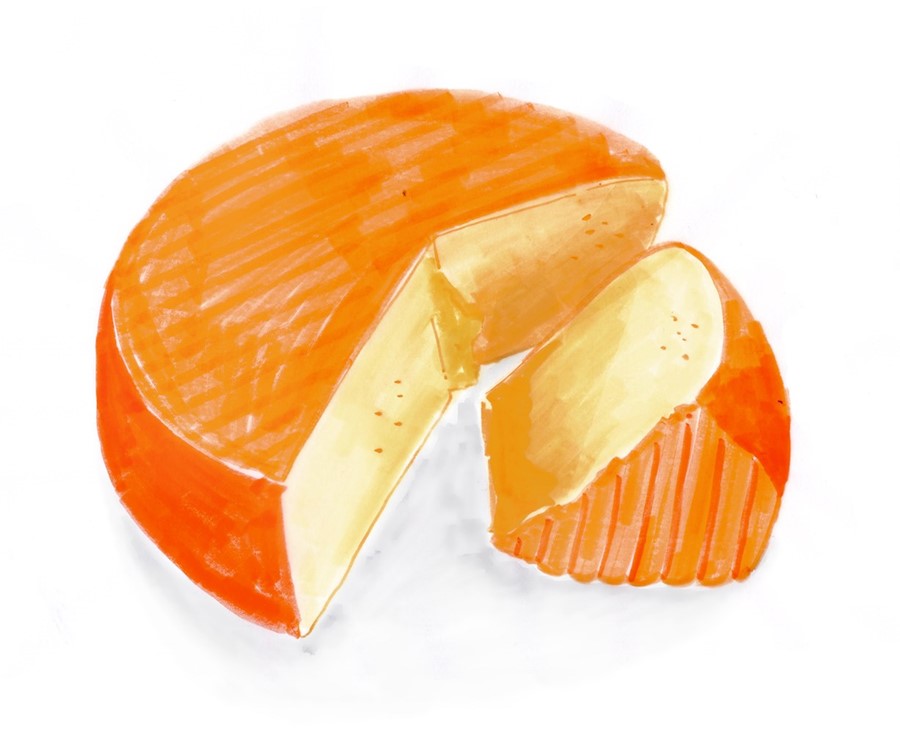The beginning of Paris Fashion Week presents a multitude of gastronomic pleasures to any gourmand, and chief among them, cheese
Turophilia, or the love of cheese, might not be one of the most commonly used words in the English language, but its denoted meaning is surely familiar to many. While we Brits are commonly lumped in with tame cheddars, stiltons and the occasional exotic smoked Lincolnshire, however, Parisians (as in everything) have the tendency to be more particular. Here we consider the history of the humble cheese, the best places to find it in the French capital and what to do if, by some awful turn of events, you find yourself forced to portion it out to a crowd of diners.
The History
Many efforts have been made to place the creation of cheese in historical records, but to all intents and purposes, it would seem that it predates history. One ancient legend would have us believe that its conception was a happy accident: as the story goes, an Arabian merchant filled a sheep-stomach pouch with milk before setting off on a journey across the desert, and found, upon arriving at his destination, that the rennet in the pouch had caused its contents to separate out into curds and whey – creating a thirst-quenching drink and a tasty source of sustenance in the process. In fact, it can be found throughout historical texts: Aristotle spoke of making it with fig leave and goats’ milk, Homer’s Odyssey makes reference to the Cyclops formulating his own and by the end of the Medieval era, monks were making it in European monasteries. Wherever there was milk, cheese soon followed.
It has not always been so widely available, however – during the Second World War production almost died out altogether due to rationing, when its infinite varieties gave way to the unappealingly named ‘national cheese’. Happily, today, it is once again available in abundance – there are more than 900 cheeses in existence around the world, while some specific superior products are protected by National Cheese Boards (the delight of learning that such a thing exists!) and labelled with an ‘appellation d’origine protégé’ signifying the strict conditions under which they are produced, and their resulting quality. Hilariously, French President Charles de Gaulle once famously complained of the impossibility of governing a country with 246 different kinds of cheese – though ostensibly he was addressing far more than his native land’s love of the fermented foodstuff.

The Rules
These days the love the French possess for cheese remains strong – and so too, accordingly, do the rules surrounding serving it. It is generally eaten after the main meal, as a dessert of sorts, and tends to be served in a variety – one hard, one soft, and one blue. If you do find yourself wielding a knife over a plate of French cheese with a table full of diners keenly watching your every move, the single most important thing to know is that you should never, ever, ever cut the nose from a triangle of cheese, parallel to the rind. The centre of the round is the ripest and most delicious part, and the crust the least the least so. Thus, the geometry required to most fairly dish out portions is a complex affair.
As a general rule of thumb, soft triangular cheeses should be cut in fine slices along the edge, beginning at the tip, to best share equal quantities of ripe and less-ripe areas. When it comes to square cheeses, cut into triangles, and treat as above. If it is a round cheese, such as a camembert, you may simply cut it in triangular slices, as you would a cake. Finally, don’t feel compelled to sample each on a plate to please your host – an expensive and a decadent delicacy, such behaviour might simply leave you lumped with label 'gourmand', which can be seen as positive or negative, depending on company.

The One-Stop Shops
Le Bon Marché is Paris’ oldest, and most delightful department store, and its food hall, La Grande Epicerie, is a must-visit if you find yourself with a moment’s pause on the Rive Gauche. Its resident stock of cheeses, housed in La Crèmerie, is sure to provide any variety your heart might desire during your stay, and its salespeople, if characteristically reluctant to talk (the pleasure of Parisians) a wealth of knowledge. Galeries Lafayette Gourmet, on the Rive Droite, is similarly well-stocked. Above all, try to support artisanal cheesemakers and specialist shops, by avoiding stocking up at the supermarket.
If you prefer your cheese melted, then the wonderfully kitsch Le Refuge des Fondus is the place for you – don't be put off by its tourist appeal. Situated in the 18th arrondissement in the north of the city, it is unmatched for its cosy interior – customers are obliged to climb over tables to get to their seats, and spillages occur so often that wine is served in baby bottles – and proffers only two set menus, so you can’t go too far wrong. Whatever you lose out on in taste, you’ll make up for in fun.
